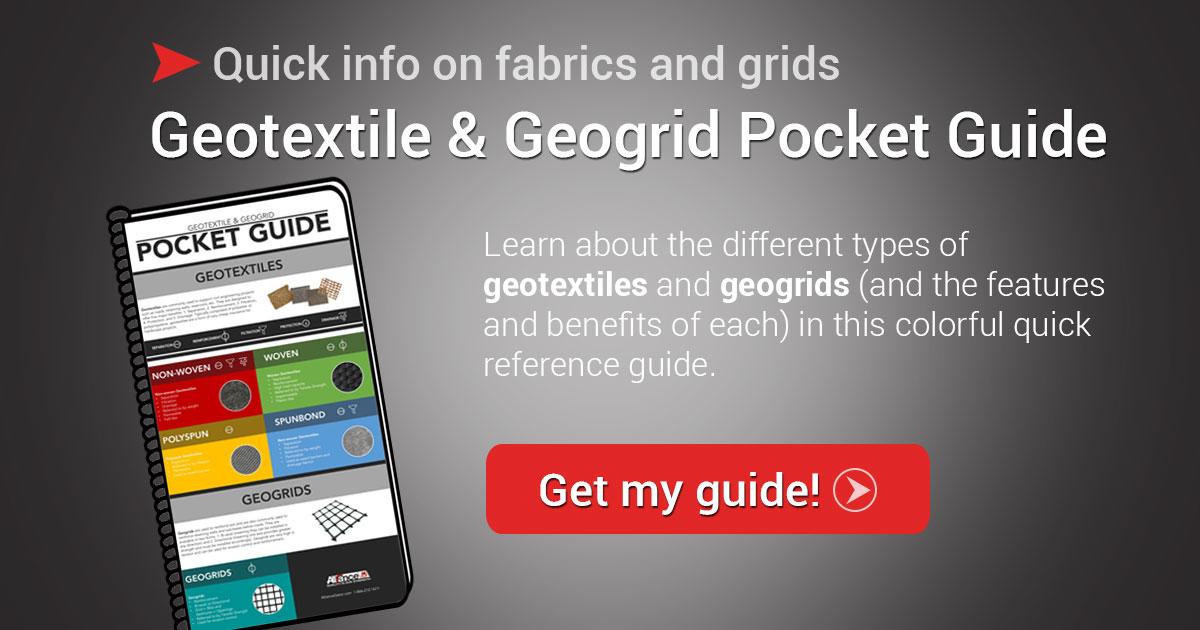PROPERTIES OF A GEOGRID
Geogrids are commonly used for retaining walls or to reinforce the soil beneath roads. In this blog post, we’ll uncover the defining characteristics of this product and highlight the ways a geogrid can benefit smaller engineered hardscape projects.
A geogrid is extremely strong in tension (and therefore classified by tensile strength). While soil will typically pull apart under tension, the use of a geogrid will allow forces to transfer throughout a much larger area than would otherwise be the case.
Want some insights into soil mechanics? Read our blog post The 4 Types Of Geotextiles Explained.
A geogrid looks and feels much different than a geotextile or fabric. As its name implies, it’s a grid that’s typically made of polyester or polypropylene and feels like plastic. The grid is formed by ribs and apertures. The apertures are the openings that allow soil to strike through.
While geogrids are most commonly seen in large-scale engineering projects such as retaining walls and roads, they can be used in smaller engineered hardscape projects as a form of cheap insurance. We say this because the installation of a geogrid will help prevent soil and wall movement, which can lead to settling and very expensive repairs down the road. (Geogrids can be used for erosion control and general reinforcement as well.)
There are two types of geogrids available in the market: biaxial or directional. Biaxial grids can be used in any direction and have equal strength in both directions. Directional grids have greater strength along one axis and need to be installed accordingly. With a directional grid, the greatest strength is typically parallel to the roll.
Geogrid placement will depend on many different factors: loading/surcharge, slope, soil type, hydrostatic/hydraulic load, the type of block used, etc. For information on how to utilize a geogrid within a particular design, it’s best to seek the advice of an engineer.
For a quick reference of the properties of a geogrid (as well as the properties of four different types of geotextiles), be sure to download our free Geotextile & Geogrid Pocket Guide.


